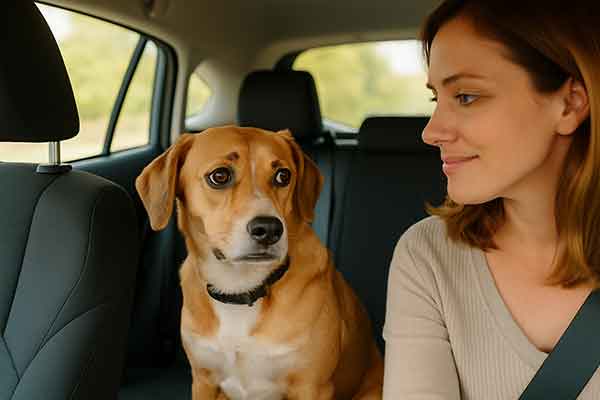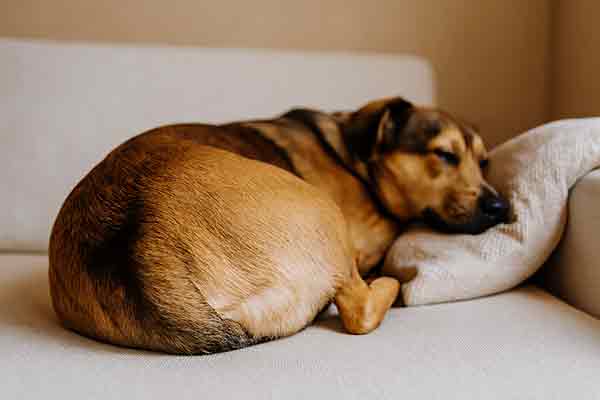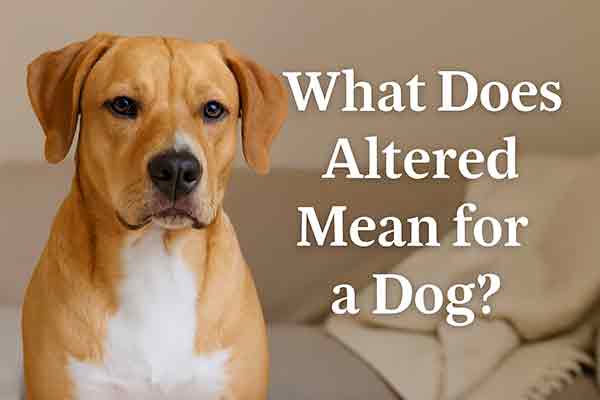Why Does My Dog Whine in the Car? | Causes & Solutions
For many pet owners, driving with a dog in the car can be a joyful experience—or a stressful one if your dog constantly whines during the ride. You might find yourself asking, “Why does my dog whine in the car?” Is it fear, excitement, or something more?
Dogs vocalize for many reasons, and car whining is often a mix of emotion, anticipation, and discomfort. In this comprehensive guide, we’ll explore the most common reasons dogs whine in the car, how to determine the cause in your pet, and practical solutions to help your dog feel calmer and safer on the road.
Table of Contents
- Common Reasons Why Dogs Whine in the Car
- Behavioral Signs That Accompany Whining
- How to Tell Why Your Dog Is Whining
- Training Tips to Reduce Whining in the Car
- Comfort Strategies for Dogs with Car Anxiety
- When to See a Veterinarian
- FAQ
Common Reasons Why Dogs Whine in the Car
Whining is your dog’s way of communicating discomfort, excitement, or need. Here are the most likely reasons your dog whines in the car:
1. Excitement
Some dogs associate car rides with fun destinations like the dog park or a visit to grandma’s. If your dog is overly excited, they may whine because they’re eager to arrive.
2. Anxiety or Fear
Not all dogs love car rides. Some feel unsafe or uncertain in moving vehicles, leading to anxious whining. This is especially true if the dog has had a bad experience in the past, such as a crash, loud noises, or being forced into a car when frightened.
3. Motion Sickness
Just like humans, dogs can get carsick. If your dog whines, drools excessively, or vomits during or after car rides, motion sickness could be the issue.
4. Anticipation of a Vet Visit
If your dog has learned that car rides often end at the vet, they may whine in anticipation or dread. Dogs are excellent at recognizing patterns and can associate the car with unpleasant experiences.
5. Need to Eliminate
Some dogs whine because they need a bathroom break. If your dog hasn’t relieved themselves before the trip, they may be uncomfortable holding it in.
6. Attention-Seeking Behavior
Dogs that are used to constant interaction may whine if they feel ignored. In the car, if they’re confined or can’t reach you, they may whine to get your attention.
7. Discomfort or Pain
Older dogs or those with joint pain may whine if the car seat or crate isn’t comfortable. Jostling, jumping in and out of the vehicle, or temperature extremes can contribute to this.

Behavioral Signs That Accompany Whining
Understanding your dog’s body language can help identify the root cause of whining. Here are behaviors that commonly accompany car whining:
-
- Pacing or restlessness
- Yawning, panting, or trembling
- Refusal to enter the car
- Vocalizations like barking or howling
- Clinging to the car door or trying to escape the crate
Take note of your dog’s full response to the ride—whining is only one part of the story.
How to Tell Why Your Dog Is Whining
Pinpointing the exact cause of whining can take some trial and observation. Try the following:
1. Note When the Whining Starts
Does your dog begin whining before you leave the driveway, or only when you’re on the move? Do they whine more on the way to certain locations?
2. Consider What the Car Means to Your Dog
If the car always leads to the vet, stress is likely. If it always leads to playtime, excitement is a safe bet.
3. Observe Physical Symptoms
Look for drooling, retching, or disinterest in treats—these point to motion sickness.
4. Try Changing Conditions
Use calming music, a new crate, or different seating positions. If whining improves or worsens, it can help isolate the cause.
Training Tips to Reduce Whining in the Car
Whether your dog is anxious or just overstimulated, gentle training and conditioning can help them learn to relax in the car.
1. Desensitize with Short Rides
Start with very short, positive trips—around the block or to a park. Gradually increase ride duration as your dog gets used to the motion.
2. Use Positive Reinforcement
Reward quiet, calm behavior with treats or praise. Avoid scolding for whining, which can increase stress.
3. Avoid Reinforcing Whining
Don’t pet or reassure your dog while they’re whining. Wait for quiet moments to provide attention.
4. Crate Train for Travel
Use a secured travel crate that your dog associates with safety. Covering the crate partially with a light blanket can reduce visual stimulation.
5. Practice Getting In and Out
Work on calmly entering and exiting the vehicle without a full ride. Reinforce calm behavior before the engine starts.
Comfort Strategies for Dogs with Car Anxiety
For anxious dogs, creating a physically and emotionally comfortable environment can reduce whining dramatically.
- Use dog seat belts or booster seats for added security
- Try pheromone sprays like Adaptil to reduce stress
- Bring familiar blankets or toys for comfort
- Play soothing classical music or white noise
- Keep windows slightly open for fresh air (but not wide enough for escape)
Make sure your dog isn’t too hot or cold. Avoid feeding large meals right before a ride to prevent nausea.
When to See a Veterinarian
If your dog’s whining persists or worsens despite your efforts, consult a vet or certified dog behaviorist. Medical causes—such as ear infections, joint pain, or car sickness—can all contribute to distress in the car.
Some dogs benefit from calming supplements or anxiety medications for travel. These should always be prescribed and dosed appropriately by your veterinarian.
FAQ
Why does my dog only whine in the car and nowhere else?
The car may trigger excitement, fear, or discomfort that isn’t present in other environments. It’s a unique stimulus that can provoke specific reactions.
How long does it take to train a dog to stop whining in the car?
It depends on the dog’s temperament and the cause of the whining. With consistency, some dogs improve in a few weeks, while others may need months or professional help.
Can I give my dog something to calm them before a car ride?
Yes, there are calming treats, supplements, and prescription medications that can help. Talk to your vet to find the safest and most effective option.
Should I ignore my dog’s whining in the car?
You shouldn’t scold them, but avoid reinforcing the behavior with attention. Redirect focus with toys or treats and reward calm moments.
Is it safe to let my dog ride loose in the car?
No. Dogs should always be restrained in a crash-tested harness, crate, or booster seat. This prevents injury and keeps everyone safe in case of sudden stops.
Conclusion
Why does your dog whine in the car? It could be excitement, anxiety, nausea, or a learned response—but the good news is that most causes can be addressed with training, preparation, and patience. Understanding your dog’s specific trigger is the first step toward creating a calmer car experience for both of you.
Whether your pup is crying with joy or trembling in fear, your support and consistency can help them feel safe, comfortable, and even happy during car rides.


